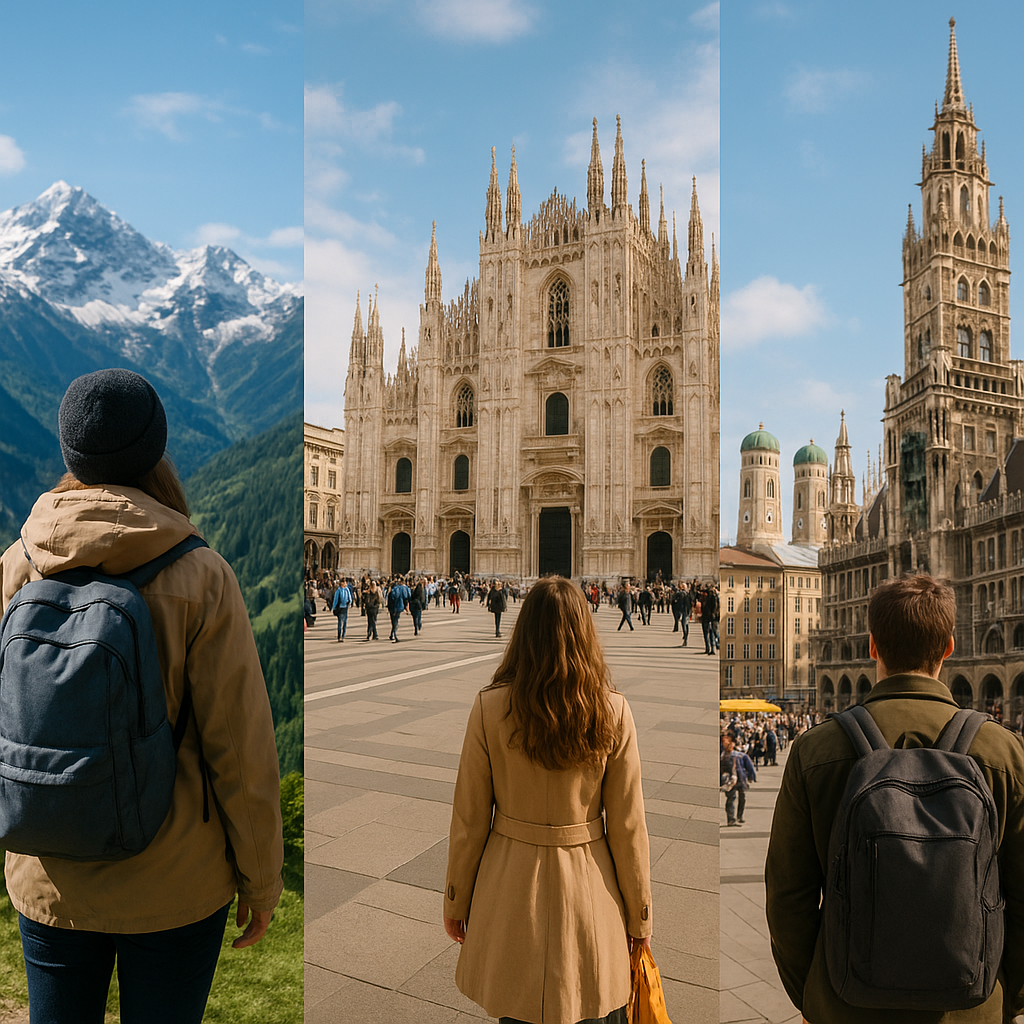
Sustainable tourism has become a crucial topic in the context of preserving the natural beauty of the Alps. This article delves into the various aspects of sustainable tourism and its significant influence on the Alpine region, highlighting both the benefits and challenges associated with this approach.
Understanding Sustainable Tourism
Sustainable tourism is defined as tourism that takes full account of its current and future economic, social, and environmental impacts, addressing the needs of visitors, the industry, the environment, and host communities. In the context of the Alps, sustainable tourism aims to minimize the negative impacts of tourism activities while maximizing the positive contributions to the local environment and communities.
Principles of Sustainable Tourism
The principles of sustainable tourism are centered around three main pillars: environmental integrity, social equity, and economic viability. These principles guide the development and management of tourism activities to ensure that they are sustainable in the long term.
- Environmental Integrity: This involves protecting natural resources, reducing pollution, and conserving biodiversity. In the Alps, this means maintaining the pristine landscapes, clean air, and diverse ecosystems that attract tourists.
- Social Equity: Sustainable tourism promotes the well-being of local communities by ensuring that tourism activities do not disrupt their way of life and by providing opportunities for local employment and cultural exchange.
- Economic Viability: This principle focuses on creating economic benefits for all stakeholders involved in tourism, including local businesses and communities, while ensuring that tourism activities are financially sustainable.
The Impact of Sustainable Tourism on Alpine Beauty
The implementation of sustainable tourism practices has a profound impact on the preservation and enhancement of the Alpine region’s natural beauty. By adopting environmentally friendly practices, tourism operators and visitors can help protect the unique landscapes and ecosystems of the Alps.
Conservation of Natural Landscapes
One of the most significant benefits of sustainable tourism is the conservation of natural landscapes. The Alps are renowned for their stunning scenery, including majestic mountains, lush valleys, and crystal-clear lakes. Sustainable tourism practices, such as limiting the number of visitors to sensitive areas and promoting eco-friendly transportation options, help to preserve these landscapes for future generations.
For example, many Alpine destinations have implemented measures to reduce the environmental impact of skiing and other winter sports. This includes using renewable energy sources for ski lifts, promoting the use of public transportation to reduce traffic congestion, and implementing strict waste management practices to keep the slopes clean.
Protection of Biodiversity
The Alps are home to a rich diversity of flora and fauna, many of which are unique to the region. Sustainable tourism practices play a crucial role in protecting this biodiversity by minimizing habitat destruction and promoting conservation efforts.
For instance, eco-tourism initiatives often include guided tours that educate visitors about the local wildlife and the importance of conservation. These tours not only provide a unique and educational experience for tourists but also generate funds that can be used for conservation projects.
Supporting Local Communities
Sustainable tourism also has a positive impact on local communities in the Alpine region. By promoting locally-owned businesses and encouraging tourists to engage with local culture, sustainable tourism helps to create economic opportunities and preserve cultural heritage.
Many Alpine villages have embraced sustainable tourism by offering authentic experiences, such as traditional crafts workshops, local food tastings, and cultural festivals. These activities not only provide tourists with a deeper understanding of the local culture but also support the livelihoods of local artisans and farmers.
Challenges and Future Directions
While sustainable tourism offers numerous benefits, it also presents several challenges that need to be addressed to ensure its long-term success in the Alpine region.
Balancing Tourism and Conservation
One of the main challenges of sustainable tourism is finding the right balance between promoting tourism and conserving natural resources. This requires careful planning and management to ensure that tourism activities do not exceed the carrying capacity of the environment.
For example, popular tourist destinations in the Alps often face issues such as overcrowding, which can lead to environmental degradation and a diminished visitor experience. To address this, some destinations have implemented measures such as visitor quotas, seasonal restrictions, and the development of alternative attractions to distribute tourist traffic more evenly.
Engaging Stakeholders
Another challenge is engaging all stakeholders, including local communities, tourism operators, and government authorities, in the development and implementation of sustainable tourism practices. This requires effective communication, collaboration, and the sharing of best practices to ensure that everyone is working towards the same goals.
For instance, local communities need to be actively involved in decision-making processes to ensure that their needs and concerns are addressed. Tourism operators need to be educated about sustainable practices and provided with the necessary resources and support to implement them. Government authorities need to create policies and regulations that promote sustainable tourism and provide incentives for businesses to adopt eco-friendly practices.
Adapting to Climate Change
Climate change poses a significant threat to the Alpine region, with rising temperatures and changing weather patterns affecting the natural environment and tourism activities. Sustainable tourism must adapt to these changes by promoting climate resilience and reducing the carbon footprint of tourism activities.
For example, ski resorts in the Alps are increasingly investing in snowmaking technology to ensure reliable snow cover in the face of warmer winters. Additionally, many destinations are promoting year-round tourism by developing summer activities such as hiking, mountain biking, and wildlife watching, which are less dependent on weather conditions.
Conclusion
Sustainable tourism has the potential to significantly enhance the preservation and appreciation of the Alpine region’s natural beauty. By adhering to the principles of environmental integrity, social equity, and economic viability, sustainable tourism can create a harmonious balance between tourism development and conservation.
However, achieving this balance requires ongoing efforts and collaboration among all stakeholders. By addressing the challenges and embracing innovative solutions, the Alpine region can continue to thrive as a premier destination for sustainable tourism, offering visitors unforgettable experiences while safeguarding its unique landscapes and cultural heritage for future generations.

